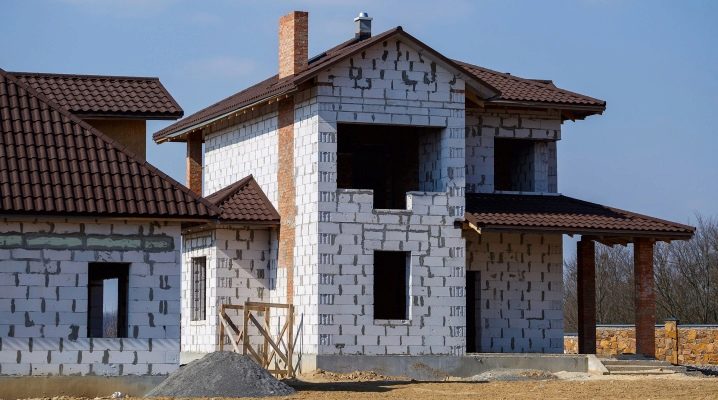Aerated concrete and PENOPLEX® - the optimal combination of wall material and insulation

Compliance with standards and technological discipline in design and construction will ensure the reliability and high energy efficiency of aerated concrete walls insulated with extruded polystyrene foam.
The combination of aerated concrete and extruded polystyrene foam (EPS) in a wall structure is highly energy efficient, if only because each of these materials in its "family" has the lowest thermal conductivity.
The maximum thermal conductivity of gas and foam concrete on a cement binder in real operation does not exceed 0.43 W / m ∙ ° C, while, for example, for masonry made of ordinary clay bricks on a cement-sand mortar, this indicator reaches 0, 81 W / m ∙ ° С, for reinforced concrete - 2.04.
In extruded polystyrene foam, the highest thermal conductivity in real operating conditions will not be higher than 0.032 W / m ∙ ° С, while in other widespread heaters it reaches higher values. For example, the thermal conductivity of stone wool can reach 0.048 W / m ∙ ° С, for non-pressed expanded polystyrene - up to 0.059. Data on thermal conductivity of materials are taken from SP 50.13330.2012 Thermal protection of buildings. Nevertheless, there is a myth about the undesirability of this combination of materials due to the low vapor permeability of EPS, which supposedly contributes to the formation of condensate at the interface between the surfaces of aerated concrete and insulation.
Vapor permeability of extruded polystyrene foam, in particular, of PENOPLEX thermal insulation® is no more than 0.005 mg / (m ∙ h ∙ Pa). But the appearance of condensation and the deterioration of the heat-shielding properties of the enclosing structures has nothing to do with this, but is a consequence of design and / or construction shortcomings. Let's discuss what needs to be done to avoid the most common mistakes in this situation.
Only dry aerated concrete is insulated
Professionals are well aware that aerated concrete leaves the production hall raw in the literal sense of the word. Moisture makes up one third of the mass of the material. It evaporates over time. If the "fresh" aerated concrete blocks are immediately laid and immediately, without slowing down the pace of construction, continue laying the subsequent layers of the wall structure, then the moisture from the aerated concrete will have nowhere to go, and it will indeed act as condensate on its surface.
Professional builders know that thermal insulation work must be carried out, on average, one construction season after the manufacture of aerated concrete blocks, and will warn the customer about this. To speed up the process, you can organize forced drying using heat guns and other similar devices. But for obvious reasons, this is not always the case.
It is important to comply with the standards for protection against waterlogging.
The main federal standard for thermal protection SP 50.13330.2012 regulates the design of thermal insulation not only in order to achieve normalized thermal resistance, but also taking into account moisture accumulation and possible waterlogging.
In construction practice, this means that in a temperate climate when using aerated concrete blocks with a thickness of 300 mm, the layer of thermal insulation from extruded polystyrene foam should be at least 50 mm, and optimally - 100 mm. Such a solution will exclude the appearance of a dew point in the cavity of the wall material and, accordingly, the formation of condensation with all the ensuing consequences.
Technological discipline should be observed during installation
Correct geometric shapes of aerated concrete blocks and slabs PENOPLEX® make materials perfectly compatible with each other. On one condition: secure fixation. To do this, you need to fix the thermal insulation to the wall in two ways - using glue and a dowel kit. Otherwise, convective heat fluxes may occur between the surfaces of the wall material and the insulation. Achieving the desired result, again, depends on the quality of the work of designers and builders.
In order to achieve high energy efficiency and reliability, the manufacturer of thermal insulation "PENOPLEX" recommends using high-quality boards PENOPLEX STENA ® with a surface milled at the factory to ensure high adhesion with plaster and adhesives. For glue fixing of slabs to aerated concrete blocks, it is recommended to use PENOPLEX adhesive foam® FASTFIX®.
On the official website of PENOPLEX in the section "Aerated concrete (foam blocks, cinder blocks)" you can read about the advantages of the material over other heaters, watch a video that clearly demonstrates the process of building a house from aerated concrete using PENOPLEX slabs®, as well as download the “Technological map for the construction of houses from lightweight blocks.













The comment was sent successfully.